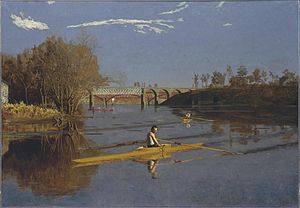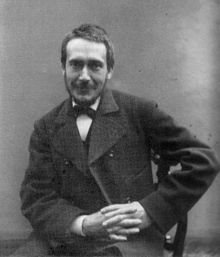Dear Zazie, Here is today’s Lovers’ Chronicle from Mac Tag to his muse. Visit us on twitter @cowboycoleridge. What stirs your mortal frame? Rhett
The Lovers’ Chronicle
Dear Muse,
© copyright 2020 mac tag/cowboy coleridge all rights reserved
© copyright 2019 mac tag/cowboy coleridge all rights reserved
so i co-opted this
from the real Coleridge
see what you think…
all thoughts, all delights,
whatever stirs me,
all are but mirrors of you,
this i thrive on
© copyright 2018 mac tag/cowboy coleridge all rights reserved
when She came callin’…
from Ecclesiastes;
“For who knoweth what is good
for you in this life, all the days
of your vain life which you spendeth
as a shadow? for who can tell you
what shall be after you under the sun?”
“A good name is better
than precious ointment;
and the day of death
than the day of one’s birth.”
“It is better to go to the house of mourning,
than to the house of feasting:
for that is the end of all of us;
and the living will lay it to your heart.”
“Sorrow is better than laughter:
for by the sadness
of the countenance
the heart is made better.”
she wrote it down for me,
that day, chapter six, verse twelve
and chapter seven verse one through three
she was gonna write out chapter nine
verse eleven, but she did not have time
so she read it to me instead
she sat there next to me
in the bright, dry sunshine
slowly, my head came to rest
on her shoulder,
and the tears came too
nothin’ else was said
what is understood
need not be discussed
that night, we spoke
in movements, in touches
in motions and looks
i have not felt since that day,
the day life wrung the last of me
not that life has not tried since
that is how i tell it, anyway
maybe it was not life,
maybe it was the desert sun
that took it out of me
or maybe it is, that i accept
what comes after me in the sun
© copyright 2017 mac tag/cowboy Coleridge all rights reserved
 Today marks the anniversary of the death of Samuel Taylor Coleridge. He was not lucky in love. He married Sarah Fricker but the marriage proved unhappy. He evidently had no great love; other than poetry and opium. Here is an excerpt from his poem “Frost at Midnight”:
Today marks the anniversary of the death of Samuel Taylor Coleridge. He was not lucky in love. He married Sarah Fricker but the marriage proved unhappy. He evidently had no great love; other than poetry and opium. Here is an excerpt from his poem “Frost at Midnight”:
Therefore all seasons shall be sweet to thee,
Whether the summer clothe the general earth
With greenness, or the redbreast sit and sing
Betwixt the tufts of snow on the bare branch
Of mossy apple-tree, while the nigh thatch
Smokes in the sun-thaw; whether the eave-drops fall
Heard only in the trances of the blast,
Or if the secret ministry of frost
Shall hang them up in silent icicles,
Quietly shining to the quiet Moon.
And, just for you muse, here is his poem;
“Love”
All thoughts, all passions, all delights,
Whatever stirs this mortal frame,
All are but ministers of Love,
And feed his sacred flame.
Oft in my waking dreams do I
Live o’er again that happy hour,
When midway on the mount I lay,
Beside the ruined tower.
The moonshine, stealing o’er the scene
Had blended with the lights of eve;
And she was there, my hope, my joy,
My own dear Genevieve!
She leant against the armèd man,
The statue of the armèd knight;
She stood and listened to my lay,
Amid the lingering light.
Few sorrows hath she of her own,
My hope! my joy! my Genevieve!
She loves me best, whene’er I sing
The songs that make her grieve.
I played a soft and doleful air,
I sang an old and moving story—
An old rude song, that suited well
That ruin wild and hoary.
She listened with a flitting blush,
With downcast eyes and modest grace;
For well she know, I could not choose
But gaze upon her face.
I told her of the Knight that wore
Upon his shield a burning brand;
And that for ten long years he wooed
The Lady of the Land.
I told her how he pined: and ah!
The deep, the low, the pleading tone
With which I sang another’s love,
Interpreted my own.
She listened with a flitting blush,
With downcast eyes, and modest grace;
And she forgave me, that I gazed
Too fondly on her face!
But when I told the cruel scorn
That crazed that bold and lovely Knight,
And that he crossed the mountain-woods,
Nor rested day nor night;
That sometimes from the savage den,
And sometimes from the darksome shade,
And sometimes starting up at once
In green and sunny glade,—
There came and looked him in the face
An angel beautiful and bright;
And that he knew it was a Fiend,
This miserable Knight!
And that unknowing what he did,
He leaped amid a murderous band,
And saved from outrage worse than death
The Lady of the Land!
And how she wept, and clasped his knees;
And how she tended him in vain—
And ever strove to expiate
The scorn that crazed his brain;—
And that she nursed him in a cave;
And how his madness went away,
When on the yellow forest-leaves
A dying man he lay;—
His dying words—but when I reached
That tenderest strain of all the ditty,
My faultering voice and pausing harp
Disturbed her soul with pity!
All impulses of soul and sense
Had thrilled my guileless Genevieve;
The music and the doleful tale,
The rich and balmy eve;
And hopes, and fears that kindle hope,
An undistinguishable throng,
And gentle wishes long subdued,
Subdued and cherished long!
She wept with pity and delight,
She blushed with love, and virgin-shame;
And like the murmur of a dream,
I heard her breathe my name.
Her bosom heaved—she stepped aside,
As conscious of my look she stepped—
The suddenly, with timorous eye
She fled to me and wept.
She half enclosed me with her arms,
She pressed me with a meek embrace;
And bending back her head, looked up,
And gazed upon my face.
’Twas partly love, and partly fear,
And partly ’twas a bashful art,
That I might rather feel, than see,
The swelling of her heart.
I calmed her fears, and she was calm,
And told her love with virgin pride;
And so I won my Genevieve,
My bright and beauteous Bride.
| Thomas Eakins | |
|---|---|
|
Self portrait
National Academy of Design, New York |
|
Today is the birthday of Thomas Cowperthwait Eakins (Philadelphia; July 25, 1844 – June 25, 1916 Philadelphia); realist painter, photographer, sculptor, and teacher. Widely acknowledged to be one of the most important artists in American art history.
For the length of his professional career, from the early 1870s until his health began to fail some 40 years later, Eakins chose as his subject the people of his hometown ofPhiladelphia. He painted several hundred portraits, usually of friends, family members, or prominent people in the arts, sciences, medicine, and clergy. Taken en masse, the portraits offer an overview of the intellectual life of Philadelphia in the late 19th and early 20th centuries.
In addition, Eakins produced a number of large paintings which brought the portrait out of the drawing room and into the offices, streets, parks, rivers, arenas, and surgical amphitheaters of his city. These active outdoor venues allowed him to paint the subject which most inspired him: the nude or lightly clad figure in motion. In the process he could model the forms of the body in full sunlight. Eakins also took a keen interest in the new technologies of motion photography, a field in which he is now seen as an innovator.
Eakins was a controversial figure whose work received little by way of official recognition during his lifetime.
“She [the female nude] is the most beautiful thing there is in the world except a naked man, but I never yet saw a study of one exhibited… It would be a godsend to see a fine man model painted in the studio with the bare walls, alongside of the smiling smirking goddesses of waxy complexion amidst the delicious arsenic green trees and gentle wax flowers & purling streams running melodious up & down the hills especially up. I hate affectation.“
The nature of Eakins sexuality and its impact on his art is a matter of intense scholarly debate. An early romance with a Philadelphia girl, Emily Sartain, foundered after Eakins moved to Paris to study, and she accused him of immorality. It is likely Eakins had told her of frequenting places where prostitutes assembled. The son of Eakins physician also reported that Eakins had been “very loose sexually – went to France, where there are no morals, and the french morality suited him to a T”.
In 1884, Eakins married Susan Hannah Macdowell, the daughter of a Philadelphia engraver. Two years earlier Eakins’ sister Margaret, who had acted as his secretary and personal servant, had died of typhoid. It has been suggested that Eakins married to replace her.
Macdowell was 25 when Eakins met her at the Hazeltine Gallery where The Gross Clinic was being exhibited in 1875. Unlike many, she was impressed by the controversial painting and she decided to study with him at the Academy, which she attended for 6 years, adopting a sober, realistic style similar to her teacher’s.
After their childless marriage, she only painted sporadically and spent most of her time supporting her husband’s career, entertaining guests and students, and faithfully backing him in his difficult times.
She and Eakins both shared a passion for photography, both as photographers and subjects, and employed it as a tool for their art. She also posed nude for many of his photos and took images of him. Both had separate studios in their home.

Max Schmitt in a single scull (1871), Metropolitan Museum of Art, New York.










Mac Tag
Song of the day – Samuel Coleridge-Taylor – Symphony in A Minor Op. 8 (1896) I. Allegro Appassionato
And she is still there, busied with a dance
Deep in the dewy shadow of a wood,
Or where stars walk upon a mountain-top.
– W.B. Yeats
You would drink freely: but my love to ye Shall show itself more openly hereafter. – Shakespeare
I read some Shakespeare every year, Lear always. Cheers you up if you read that. – Ernest Hemingway
Reality is relative, depending on what lens you look through. – Sylvia Plath


No Comments on "The Lovers’ Chronicle 25 July – dry heat – death of Samuel Taylor Coleridge – art by Thomas Eakins"